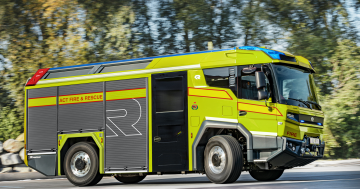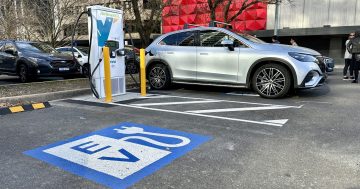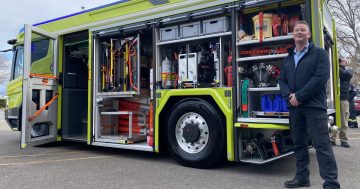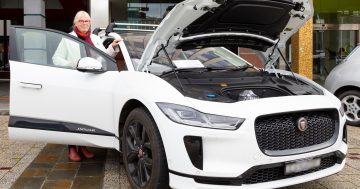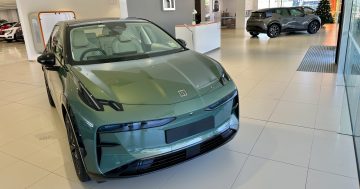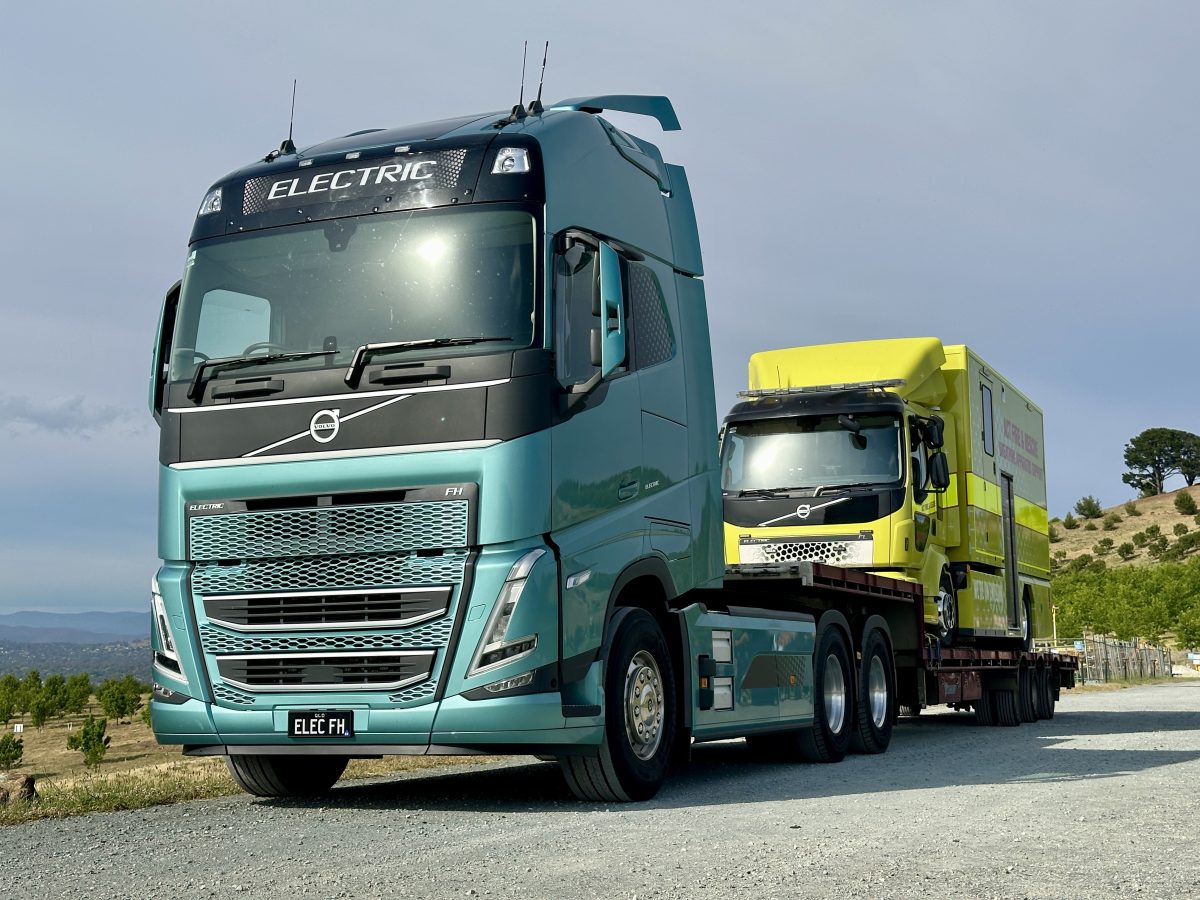
The journey took two days and seven recharges. Photo: James Coleman.
The ACT’s first fully electric fire truck arrived last week on the back of an enormous prime mover, and in case you’re thinking, “Surely they didn’t just do that and lug it around on the back of something that’s clearly a diesel behemoth”, the answer is, “No, they didn’t”.
The Volvo FH Electric is, as the name implies, electric.
It’s one of four in the country so far, powered by up to three electric motors and six battery packs. Range is estimated at 300 km, and the gross weight is 44 tonnes.
The new ‘Breathing Apparatus support vehicle’ for ACT Fire & Rescue – also an electric Volvo – was coming from Volvo Australia’s headquarters in Brisbane. A quick Google search reveals this to be 1195 km away, so the electric prime-mover’s trek to Canberra would hold the record for the longest ever undertaken by a truck of this type in Australia.
“It was a bit of an interesting idea the guys here came up with,” Volvo Australia’s vice president of Emerging Technology Paul Illmer says.
“I didn’t think they were serious at first.”
If you thought there weren’t enough public charging points for electric cars, there are exactly none for electric trucks. This meant Volvo Australia’s team would have to coax the truck into charging parks designed for things much, much smaller.
Fortunately, they wouldn’t have to be there for long.
“We just use the mandatory rest stops,” Paul explains.
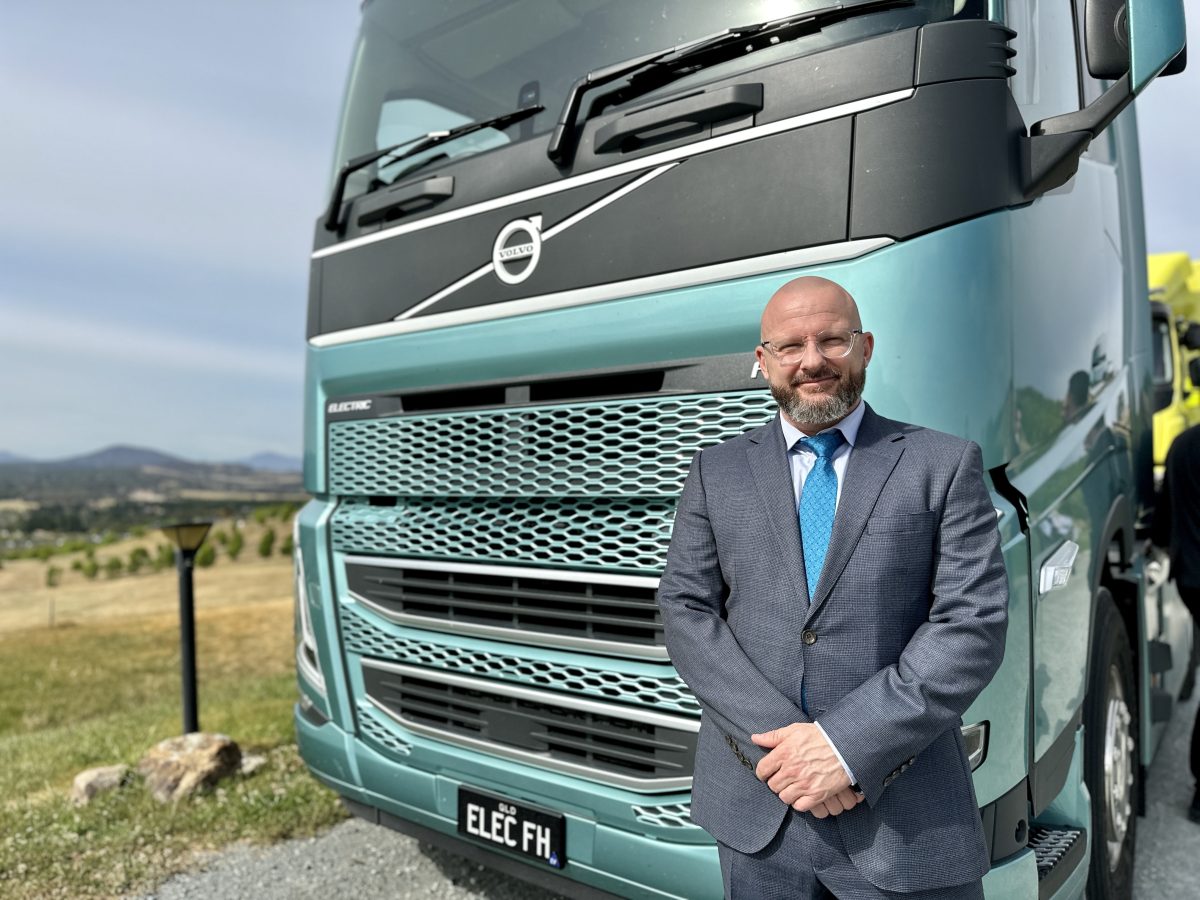
Volvo Australia’s Paul Illmer. Photo: James Coleman.
The truck is customisable, depending on what the client wants from it. They can have from two to six batteries on board, with capacity ranging from 180 to 540 kWh. Each one weighs about 500 kg to bring the truck’s total weight to about 10.5 tonnes.
Paul says the towing capacity of 44 tonnes is “about the same as a traditional diesel”.
Even with all six batteries down to zero per cent charge, they can be brought back to full within 1.5 hours on a fast charger.
“The thing is, as long as you don’t drop that low, you just top it up whenever you have the chance.”
The crew left Brisbane first thing on Monday, 6 November, and reached Canberra in time for the official launch of the new fire truck on Wednesday, 8 November – two days and seven recharges.
“It saved 1200 kg of carbon compared to if that journey was conducted by a diesel truck,” Paul adds.
Volvo Australia expects to see “hundreds of these on the roads in the next two years”.
“Once we get a rolling population of these trucks, I think what will happen is some of the bigger fuel companies will invest in specific truck charging stations … a bit like diesel fuel today where you can drive in, ‘fill up’ and drive out again.”
But there is some legislative work to be done first.
Until early October, trucks in Australia could not exceed 2.5 metres in width without a permit. This has now been increased to 2.55 metres, ostensibly to facilitate the uptake of new safety features on heavy trucks triggered by the 2018-2020 National Road Safety Action Plan. But it also allows electric trucks to be made in Australia due to their bulky batteries and equally bulky protective covers.
The only other hurdle to jump over is the maximum weight allowances.
“Australia has a maximum allowance of 6.5 tonnes over the front axle, so that means no matter how the combination is loaded, you can’t exceed 6.5 tonnes on the front,” Paul says.

Swedish humour. Photo: James Coleman.
The electric Volvo is designed in Europe, where the limit is 10 tonnes, so the only way it can run on Australia’s roads is with a permit. But Paul is confident this will happen.
“We’ve had announcements over the last few weeks from a number of states and territories that they’re allowing between 7.5 and 8 tonnes, which means finally these trucks can be driven freely.”
Paul says these announcements have been met by “a lot of demand” from companies looking to transition their fleets to electric trucks. Others are yet to be convinced and think hydrogen power is the way to go for heavy vehicles.
“Volvo’s view is we are energy agnostic and feel that the transport task will drive the energy choice,” Paul says.
“We’ve got four hydrogen trucks we’re testing in Sweden at the moment, and we should have them on the road in Australia around 2027. They’re a little more complex compared to a battery electric vehicle … but we know some segments won’t be able to de-carbonise without hydrogen because the journeys are too long or the loads are too heavy.”














